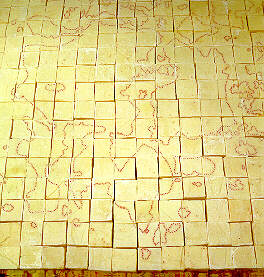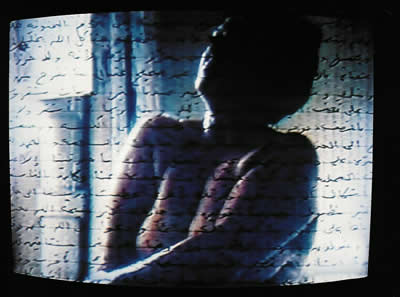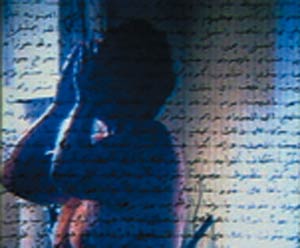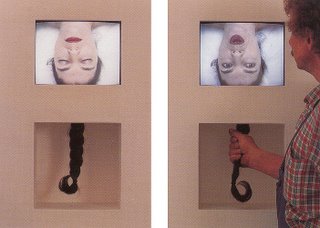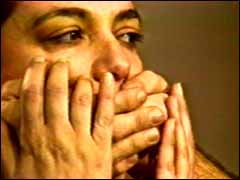
Roadworks (Performance-Still) 1985-1995
According to the artist herself, the oppressive atmosphere at the Slade School of Art may have contributed to that fact that she abandoned the sheltering institutions and began to explore the possibilities of performances. From the outset, the body has always been a central element in Hatoum’s work, whereby she rejects the separation of mind and body she observes in the Western world. For the first time, at Slade, she came into contact with stances such as feminism, which she eventually abandoned as she did not consider it to represent her particularity as a Palestinian woman, but that would lead her to a broader analysis of the relations between different power structures. At the time, performance became the most groundbreaking instrument suited to the urgency of her needs. Therefore, throughout the first half of the decade of the eighties, Hatoum carried out a series of controversial performances brimming with political content.
This piece was produced within this framework, in 1985, on the streets of Brixton, a predominantly black working class neighbourhood, located in the outskirts of London. Hatoum carried out two performances pertaining to an action organised by another artist Stefan Szczelkun entitled Road Works, in which the intention was to create a relationship between a specific group of artists intervening in an impoverished community. In this way, these artists would produce their work in an environment and for an audience very different that that customarily visiting museums and galleries.
Hatoum is portrayed in the photograph barefoot and strolling along the neighbourhood streets with a pair of heavy Doc Marten’s boots tied to her ankles. Her feet appear naked and vulnerable compared to the sturdy boots traditionally worn by the police or by skinheads. The artist presents herself as an impoverished person who questions the system, trying to make manifest its structural mechanism through an action in which even the basic act of walking becomes difficult.
In another of the artist’s performance, carried out with Szczelkun himself, two people with their mouths covered with masking tape, dressed in black jumpers and also barefoot, intermittently lay down, the person remaining standing a white mark, like those at the scene of a crime, around the body of the prostrate person. Right away, the person on the ground substitutes the imaginary forensic officer, this time outlining the silhouette of the person that had been standing up before, and leaving the outlines of the fallen bodies on the ground. This type of action gradually disappeared from her work as they began to be absorbed by the institutions, and subsequently losing their impact and political resonance. In later years, the artist’s body gradually disappeared from her works in order make way for the presence of that other body belonging to the spectator. Her works, although ever less narrative and ever more ambiguous, do not seem to have abandoned that political sense that characterized this type of action carried out during the early eighties. M. M. R.
- http://www.fundacion.telefonica.com/at/colfotografia/paginas/e12.html








